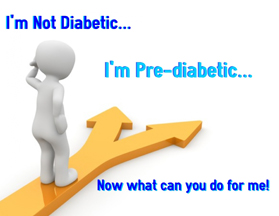- News Front Page
- Uncategorized
- Headline News
- Filipino Calgarian
- Business
- Pinoy Stories
- Community News
- Publisher's Note
- The Main Ingredient
- Views and Opinions
- Maikling Kwento
- Alberta News
- OFW – Month
- Travel News
- Health and Lifestyle
- Pinoy Toons
- Pinoy Spirit
- Entertainment
- The Philippine Lawyer
- Horoscope
- Greetings
- About Us
- Greetings From the Prime Minister
- Greetings from the President of the Philippines
- Greetings from the Premier of Alberta
- Greetings from the Mayor of Calgary
- Advertise With Us
- Disclaimer
- Subscription
Publisher's Note
- Publisher’s Note
 by CK
May is the month of flowers not just in the Philippines but also here in Calgary. A lot of my neighbors have done their spring cleaning and unfortunately I cannot cope up with them. I remember that during this time of the year my husband, Hank gets busier day by day. He takes care [...]
by CK
May is the month of flowers not just in the Philippines but also here in Calgary. A lot of my neighbors have done their spring cleaning and unfortunately I cannot cope up with them. I remember that during this time of the year my husband, Hank gets busier day by day. He takes care [...]
Visitors to Pinoytimes
Page added on May 21, 2017
Prediabetes

What is prediabetes?
Prediabetes is a warning sign that you are at risk for getting type 2 diabetes. It means that your blood sugar is higher than it should be, but not high enough to be diabetes. Prediabetes is also called impaired glucose tolerance or impaired fasting glucose. Most people who get type 2 diabetes have prediabetes first.
What causes prediabetes?
The food you eat turns into sugar, which your body uses for energy. Normally, an organ called the pancreas makes insulin, which allows the sugar in your blood to get into your body’s cells. But when your body can’t use insulin the right way, the sugar doesn’t move into cells. It stays in your blood instead. This is called insulin resistance. The buildup of sugar in the blood causes prediabetes.
People who are overweight, aren’t physically active, and have a family history of diabetes are more likely to get prediabetes. Women who have had gestational diabetes are also more likely to get prediabetes.
What are the symptoms?
Most people with prediabetes don’t have any symptoms. But if you have prediabetes, you need to watch for signs of diabetes, such as:
• Feeling very thirsty.
• Urinating more often than usual.
• Feeling very hungry.
• Having blurred vision.
• Losing weight without trying.
How is prediabetes diagnosed?
A blood test can tell if you have prediabetes. You have prediabetes if:
• The results of your fasting blood glucose test are between 6.1 to 6.9 millimoles per litre (mmol/L).
• The results of your oral glucose tolerance test (OGTT) are 7.8 to 11.0 mmol/L (2 hours after the beginning of the test).
• The results of your hemoglobin A1c test are 6.0% to 6.4%.
How is it treated?
The key to treating prediabetes and preventing type 2 diabetes is getting your blood sugar levels back to a normal range. You can do this by making some lifestyle changes.
• Watch your weight. If you are overweight, losing just a small amount of weight may help. Reducing fat around your waist is particularly important.
• Make healthy food choices. Limit the amount of unhealthy fat you eat, such as saturated fat and trans fat. Try to cut calories and limit sweets.
• Be active. You can do moderate activity, vigorous activity, or both. Bit by bit, increase the amount you do every day. You may want to swim, bike, or do other activities. Walking is an easy way to get exercise. If your doctor says it’s okay, do muscle-strengthening exercises at least 2 times a week.
Making these changes may help delay or prevent diabetes. You may also avoid or delay some of the serious problems that you can get when you have diabetes, such as heart attack, stroke, and heart, eye, nerve, and kidney disease.
Some doctors may use medicine to control blood sugar in people with prediabetes. If your doctor prescribed medicine to help control your blood sugar, take it as prescribed.
Can prediabetes be prevented?
Staying at a healthy weight, eating healthy foods, and getting regular exercise can help prevent prediabetes.
For 24/7 nurse advice and general health information call health Link at 811.
Source: www. myhealth.alberta.ca
Current as of: May 23, 2016
Translated with permission from Healthwise Inc.© and is not intended to replace the advice of care you get from your provider or other healthcare professional. Always consult your health professional for medical diagnosis and treatment.
RELATED STORIES
LATEST HEADLINES
- Alberta implements provisional ban on temporary foreign workers
- April 2017 photo enforcement locations
- New support for Alberta’s women entrepreneurs
- Miss Universe France Iris Mittenaere Crowned MISS UNIVERSE 2016
- Growth of good jobs for Canadians the goal of the Global Skills Strategy
COMMUNITY NEWS
 WHAT IS THERE TO LOSE?
WHAT IS THERE TO LOSE? Changes to Regulations Will See Age Increased for Dependent Child
Changes to Regulations Will See Age Increased for Dependent Child ABS-CBN Files $5M Lawsuit Against Casinillo and Gonzalez For Selling Pirated Set-Top Boxes in Edmonton, Canada
ABS-CBN Files $5M Lawsuit Against Casinillo and Gonzalez For Selling Pirated Set-Top Boxes in Edmonton, Canada Forever in our Hearts
Forever in our HeartsPINOY STORIES
 More Pinoys enjoys Kapamilya Shows via ABS-CBN TV Plus
More Pinoys enjoys Kapamilya Shows via ABS-CBN TV Plus- Holy Week practices in the Philippines
PINOY SPIRIT
HAVE YOUR SAY
Lorem ipsum dolor sit amet, consectetur adipiscing elit, dolor sit ipsum.PROMOTIONAL BLOCK
Lorem ipsum dolor sit amet, consectetur adipiscing elit, dolor sit ipsum.TRAVEL NEWS
PINOY TOONS
Tags
Archives















